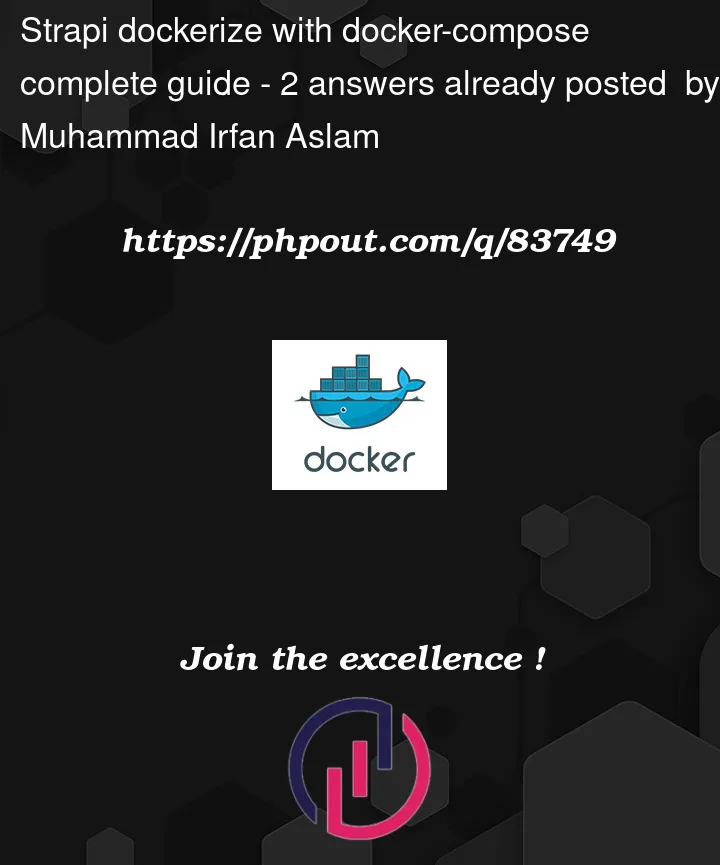https://docs.strapi.io/developer-docs/latest/setup-deployment-guides/installation/docker.html#creating-a-strapi-project
dockerize strapi with docker and dockercompose
Resolve different error

https://docs.strapi.io/developer-docs/latest/setup-deployment-guides/installation/docker.html#creating-a-strapi-project
dockerize strapi with docker and dockercompose
Resolve different error
2
Answers
Dockerize Strapi with Docker-compose
#docker-compose file
you can use my dockerized project.
Dockerfile:
if you don’t use
RUN npm run buildyour project on port 80 orhttp://localhostwork but strapi admin templates callhttp://localhost:1337on your system that you are running onhttp://localhostand there is nohttp://localhost:1337stabile url and strapi throw exceptions like:docker-compose.yml:
in docker compose file I used postgres as database, you can use any other databases and set its config in app service environment variables like:
for using environment variables in project you must use
process.envfor getting operating system environment variables.change
app/config/database.jsfile to: